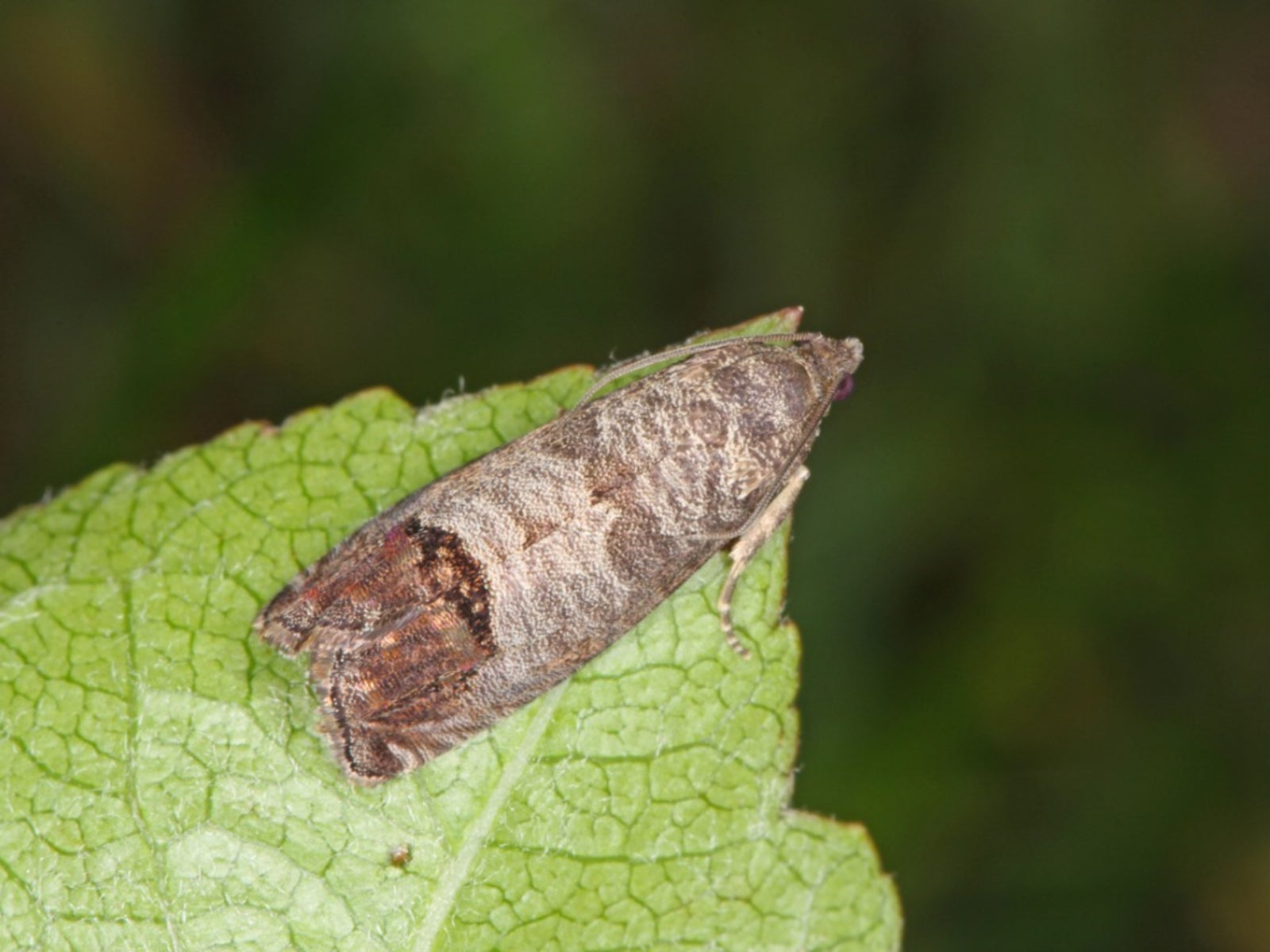Codling Moth Protection - Tips For Controlling Codling Moths


and Becca Badgett (Co-author of How to Grow an EMERGENCY Garden) Codling moths are common pests of apples and pears, but may also attack crabapples, walnuts, quince, and some other fruits. These small unassuming moths are dangerous to commercial crops and can cause extensive fruit damage. Actually, it is the moth's progeny, the larva, which cause the damage while feeding. Controlling codling moths is important to prevent the spread of the insects and widespread orchard damage. Fruit trees need to be treated according to the codling moth life cycle to be the most effective. Then you need to find out what kills codling moths and which method is best for your gardening style.
About Codling Moths
The small brown to tan moths overwinter as larva in cracks of bark or other hidden areas. They pupate in spring and emerge winged shortly after. The moths lay eggs within three days of emergence which are tiny and nearly transparent. These hatch in 8 to 14 days. The newly hatched larvae must feed to grow and begin development towards cocooning stage. The larva enters the fruit, chewing as they proceed to the core. After digesting the fruit, it is released as frass (excrement) that spills from the entrance hole, making the fruit highly undesirable. They feed on the fruit until they reach full growth, which is ½ inch (1 cm.) long, white with a brown head, and a pink tinge at the end. The codling moth life cycle starts anew when these fat larvae attach themselves to a surface and cocoon for winter. Codling moth control is needed to eliminate this unpleasant scenario.
How to Treat Codling Moth
You need to know if you have the pests before you figure out how to treat codling moth infestations. Codling moth traps containing pheromones (sexual hormones) that attract the codling moth can be used to determine the location where codling moth control is needed. Set these out when the tree is just blooming. If you find the moths in the trap, you will need to spray the trees or use mechanical or biological controls to prevent fruit damage. Controlling coddling moths is done through a variety of ways. One primary form of codling moth protection on fruit trees is to avoid the use of broad spectrum pesticides. These kill beneficial insects such as some wasps, which eat the larvae. Birds are important predators of this insect and an important means of codling moth control. Make your garden bird friendly and invite your feathered friends to feast on the codling moth youngsters.
What Kills Codling Moths?
Let's start with the obvious. Mechanical removal is one of the safest and simplest methods, but it only works if your tree is easy to access. Large plants would require you to crawl over them on a ladder and that is just not practical. Pre-season coddling moth protection can be achieved to some degree by removing and picking up old fruits from the ground. This removes some of the larvae and prevents them from reaching adulthood and starting the codling moth life cycle all over again. Some natural things to try are spinosad, granulosis virus, and Bacillus thuringiensis. Carabyl is a very effective pesticide, but it can also affect honeybee populations.
Controlling Codling Moths on Fruit
There are topical applications that can prevent codling moth larvae from feeding on fruit. Bags, or even nylons, slipped over developing fruit can prevent larvae from accessing and eating them. You may also put a cardboard shield around the trunk of the tree to keep larvae from climbing up to the fruit. Larvae can't fly or swing themselves from tree to tree, so this is actually a very practical and useful method. Whichever way you decide to control the pests, the first offense is monitoring their existence and charting their life cycle. Note: Any recommendations pertaining to the use of chemicals are for informational purposes only. Specific brand names or commercial products or services do not imply endorsement. Chemical control should only be used as a last resort, as organic approaches are safer and more environmentally friendly.
Sign up for the Gardening Know How newsletter today and receive a free copy of our e-book "How to Grow Delicious Tomatoes".

Bonnie Grant is a professional landscaper with a Certification in Urban Gardening. She has been gardening and writing for 15 years. A former professional chef, she has a passion for edible landscaping.